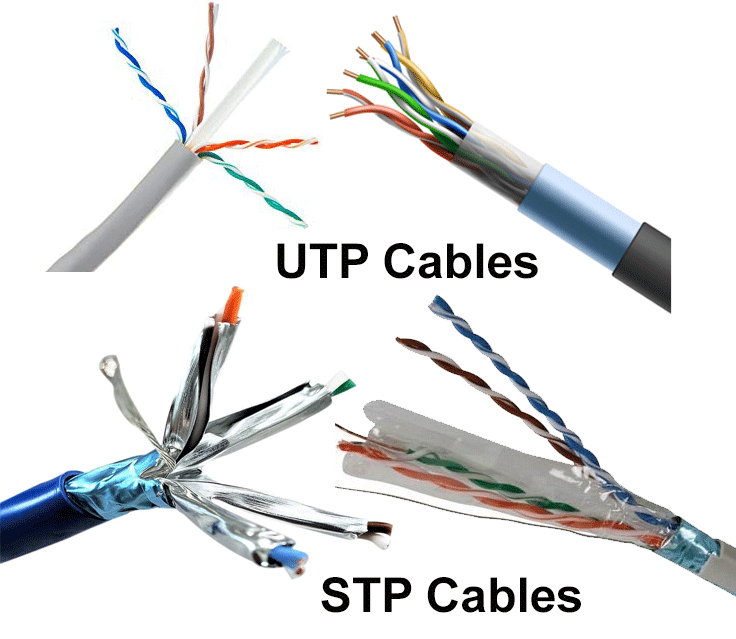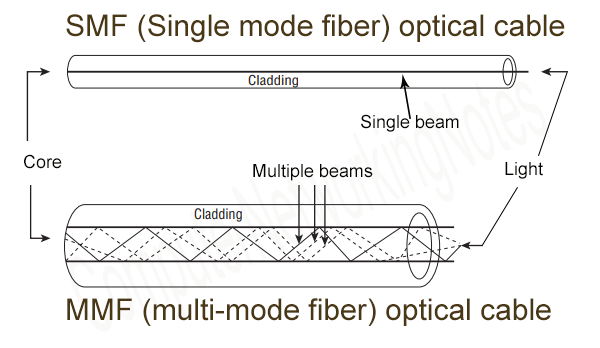What is a network cable?
Network cables are a broad concept of all cables used in different networks. It is used to connect and transfer data between the network and the computer. There are many types of network cables on the market and different types of network cables are required for different network conditions. Ethernet crossover, twisted pair, Coaxial and fiber optic cable are four of the most frequently used network cables.
Difference of network cable?
Scope of use
Only network cables are used in the Ethernet environment (LAN, MAN, VAN) called the Ethernet cable. Network cables are usually reserved for copper or aluminum cables. However, Internet cables refer to a variety of cables such as patch cables and glass optical cables. In reality, Any cable that applies to the network is a network cable.
Classify
Twisted pair cable with 8P8C module RJ45 connector. Unprotected type – UTP is the most well-defined type and is therefore called the Ethernet network cable. Ethernet network cables are also often classified according to the standard category. For example, Cat5e and Cat6 network cables are the two most commonly used network cables on the market today. Other Ethernet network cables are Cat6a, Cat7a for higher performance.
Specifications of network cables
This tutorial explains network cables Used in detail in computer networks. Find out the specifications, Standard and features of coaxial cable, twisted pair cable and fiber optic cable.
Coaxial Cable
This cable contains a conductor, insulation, braided and sheathed. Sheath covered with braids, Braided covered insulation, and insulation covering wires.
The following image shows these components.

Cover
This is the outer layer of coaxial cable. It protects the cable from physical damage.
Braided shield
This shield protects the signal from external noise and interference. This shield is made of the same metal used to build the core.
Insulation
Insulation protects core. It also keeps the core separate from the braided shield. Because both the core and the braided shield use the same metal, There is no class, they will touch each other and create a short circuit in the wire.
Conductor
The conductors carry electromagnetic signals. Based on conductor, Coaxial cables can be classified into two types; single-core coaxial cable and multi-core coaxial cable.
A single core coaxial cable uses a single central metal (usually copper) command, while a multi-core coaxial cable uses many thin strands of metal wire. The following image shows both cables.

Refer to Twisted Cables in the computer network
Twisted pair network cables are developed primarily for computer networks. This cable is also known as an Ethernet cable . Almost all modern LAN computers use this cable.
This cable includes pairs of colored insulated copper wires. Every two strings are twisted around each other to form pairs. Usually, common, normal, there are four pairs. Each pair has a solid color and a stripped string. Solid color is blue, brown, green and orange. In the deprived color, Solid colors are mixed with white.
Based on how the pairs are stripped in a plastic case, There are two types of twisted pair cables; UTP and STP.
UTP twisted pair cable ( Unprotected twisted pair ) , All pairs are wrapped in a single plastic case.
STP twisted pair cable ( twisted pair is protected ) , Each pair is wrapped with an additional metal shield, All pairs are then wrapped in a single outer plastic shell.
Similarities and differences between STP and UTP cables
- Both STP and UTP can transfer data at 10Mbps, 100Mbps, 1Gbps and 10Gbps.
- Because STP cables contain more materials, It is more expensive than UTP cable.
- Both cables use the same RJ-45 module connector (jack registered).
- STP provides more noise and anti-EMI than UTP cables.
- Maximum segment length for both cables is 100 meter or 328 feet.
- Both cables can accommodate max 1024 node in each segment.
The following image shows both twisted cables.

Refer to the optical cable in the computer network
This cable includes core, tangent, outer layer padding and martial arts. Cores made of thin glass or plastic fibers can carry data over long distances. The core is wrapped in a wrapper; The covering is wrapped in a buffer, and the buffer is wrapped in outermost martial arts
- Core carries data signals in the form of light.
- The panel reflects light back to the core.
- Buffer protects light from leaking.
- Cable protection layer from physical damage.
- Fiber optic cables are completely immune to EMI and RFI. This cable can transmit data over long distances at the highest speeds. It can transmit data up to 40 km at 100Gbps.

Optical cables use light to send data. It reflects light from end to end. Based on the number of light beams transmitted at a given time, There are two types of optical cables; SMF and MMF.
SMF optical cable (Single-mode)
This cable carries only one beam of light. This is more reliable and supports higher bandwidth and longer distances than MMF cables. This cable uses a laser as a light source and transmits light wavelengths 1300 or 1550 nano meters.
MMF optical cable (versatile yarn)
This cable carries a lot of light beams. Due to many beams, This cable carries more data than the SMF cable. This cable is used in shorter distances. This cable uses LEDs as a light source and transmits light wavelength 850 or 1300 nano meters.
Maybe you are interested: Construction of office network package
Above is some information shared about common cables. If you like this content, Please don't forget to share it with your friends through your favorite social channels.
Article author: Telecommunication Number one
Information resource: synthetic
Please contact us, when you need to buy the best price network cable in the market according to the information below
Telecommunication Company Limited Number One
Tel: (028) 3862 0440
Mobile: 0903051991
Email: info@onetel.com.vn

